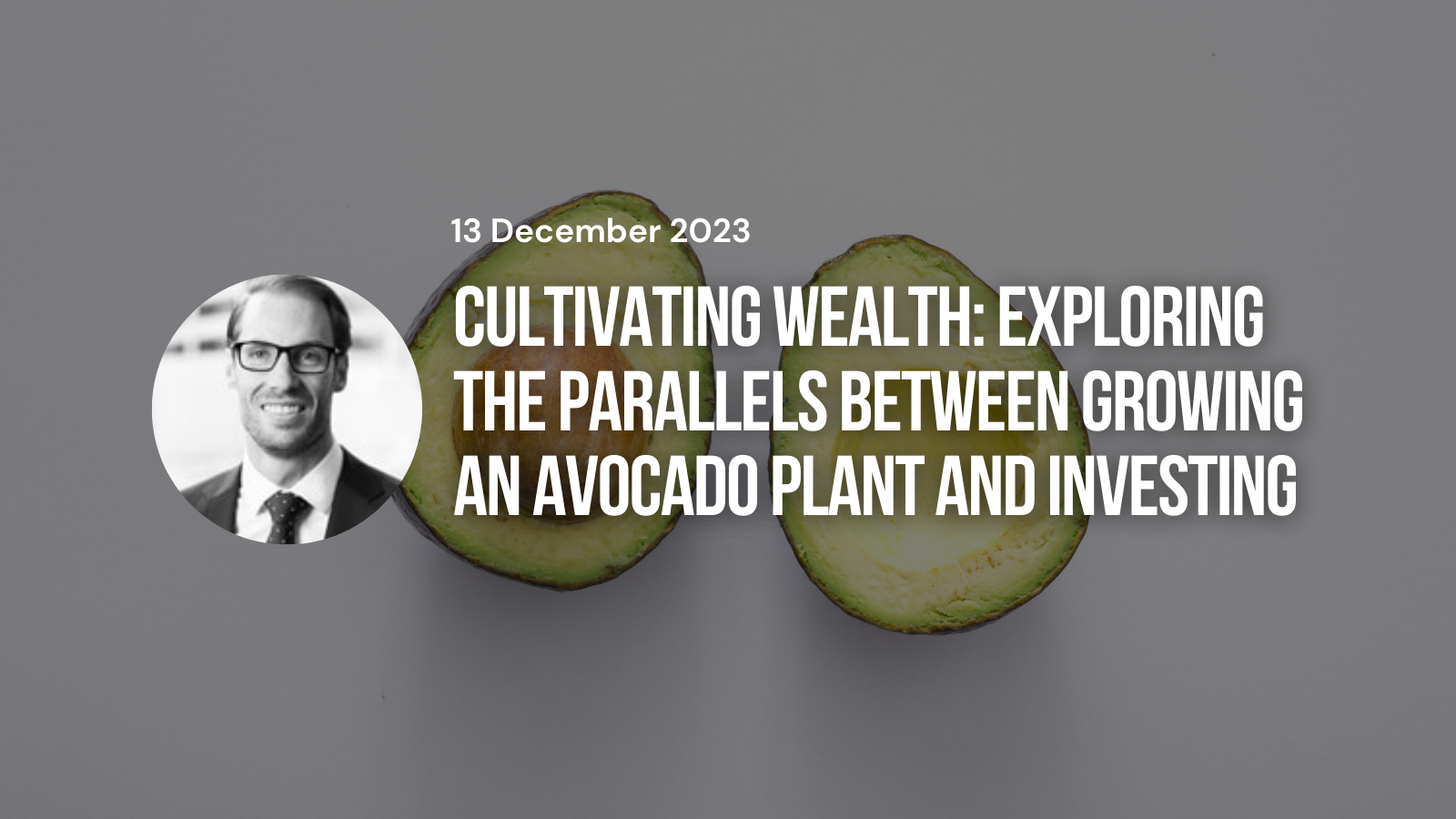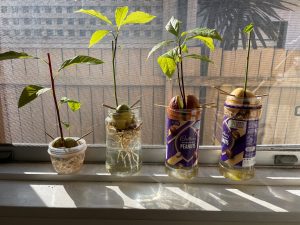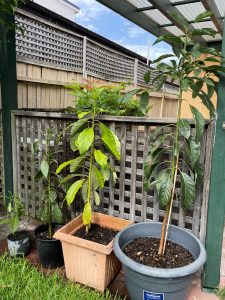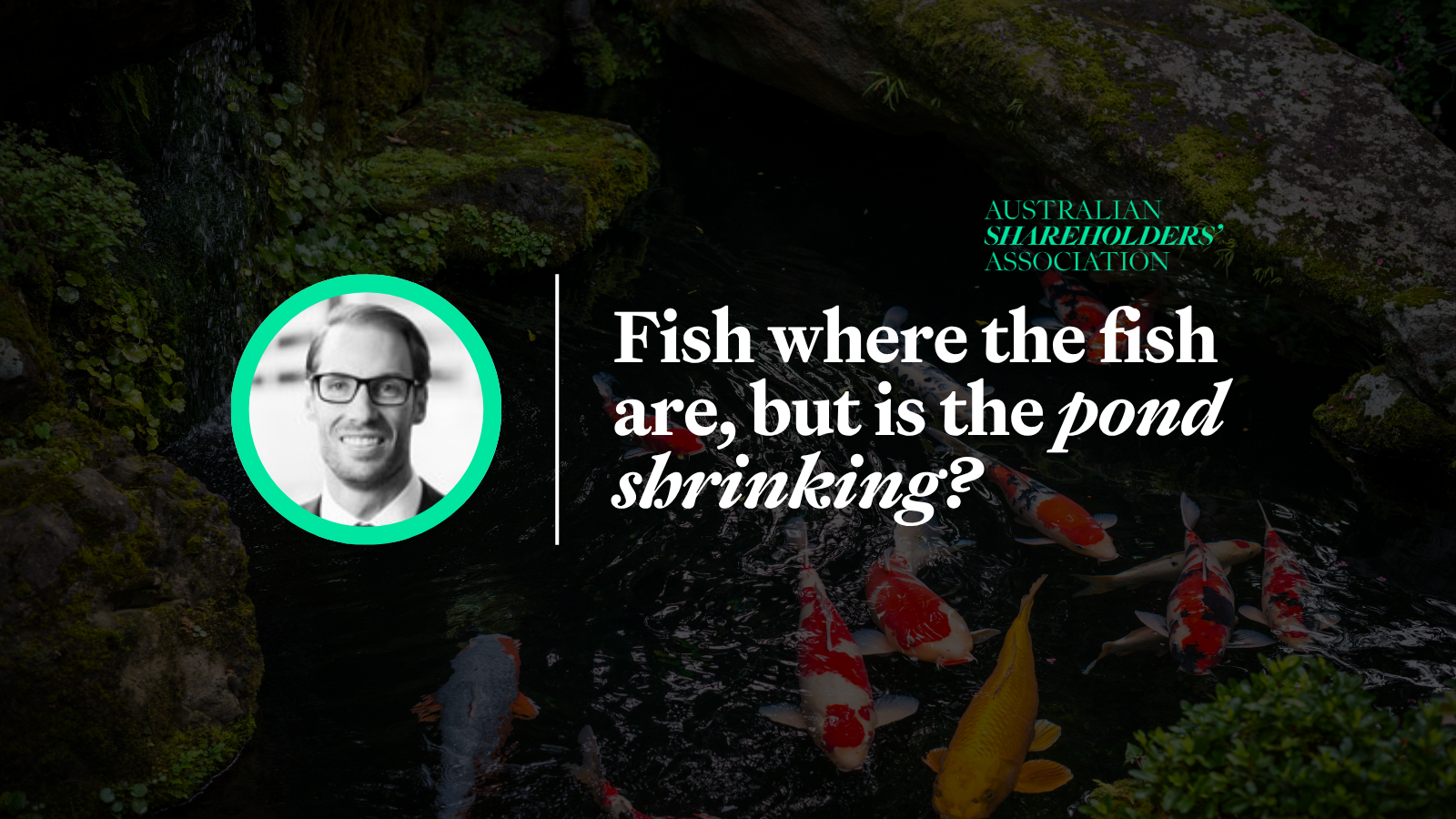
By Jared Tilley, Senior Investment Analyst, NAOS
13 December 2023
Approximately a year ago, my son and I embarked on a captivating journey with the ambitious goal of nurturing an avocado plant from a humble seed. Despite the wealth of guidance available through blogs, YouTube videos, and endless Instagram reels, what initially seemed like a straightforward endeavour for a novice gardener and a curious 5-year-old evolved into a profound lesson in patience, meticulous care, and unexpected connections to the intricate world of finance.
Patience and discipline
For those investors seeking swift returns, the process of growing an avocado plant may be unappealing. Estimates suggest a time frame ranging from 5 to 20 years before an avocado plant bears fruit. This parallels the patience required in the world of investing, where initial periods of excitement and perhaps rapid growth lead to a prolonged waiting game.
Warren Buffett’s insight, shared in his 1984 Chairman’s Letter, resonates: “Doing nothing is the most difficult task of all.” Waiting for over five years to savour a homemade guacamole may not be immediately appealing, but akin to investing, enduring patience is a prerequisite for success.
Concentration
Similar to investing, the cautionary tale of putting all proverbial eggs (or seeds) in one basket applies. While avocado plants are inherently self-pollinating, wisdom from the financial world advises against overconcentration in a single investment.
 Echoing the late Charlie Munger, during one of his last interviews with John Collison, on the Invest Like the Best podcast, Munger states “simple fact is that it’s easier to find four things that are above average than it is to find 40.” (Source -LINK) And while he is talking about diversification, for avocadoes, it becomes a practical necessity to increase chances of success.
Echoing the late Charlie Munger, during one of his last interviews with John Collison, on the Invest Like the Best podcast, Munger states “simple fact is that it’s easier to find four things that are above average than it is to find 40.” (Source -LINK) And while he is talking about diversification, for avocadoes, it becomes a practical necessity to increase chances of success.
With approximately 120 different avocado varieties, enthusiasts can enhance their odds of success by cultivating a variety of seeds. The most common in Australia, such as Hass (Type A) and Shepard (Type B), thus pairing different plant types can increase the chances of successful pollination but also provide some diversification when it comes to harvesting time.
Concept of Time
Along the journey, in both investing and growing, there are times when cuts need to be made. For the avocado plant, it is recommended that when the stem gets to 15 centimetres, you should cut it in half to promote growth. The logic makes sense but it will be extremely hard and seem highly illogical to simply hack at something you have watched grow for three to four months, particularly if it has taken a number of attempts to get this far.

With regards to investing, making cuts to your portfolio (or even adding investments) can be a highly emotional decision, particularly at a time when markets are irrational, but it’s worth remembering the below quote from Peter Lynch.
“People spend all this time trying to figure out “What time of the year should I make an investment? When should I invest?” And it’s such a waste of time. It’s so futile.”
For the green thumb, initial timing is less important although it’s worth remembering that avocado plants only fruit part of the year with Type A plants, like Hass, fruiting between May and January while Shepard (Type B) only fruit between February to April.
Bearing the Fruit
The surprising parallels between successful investing and nurturing an avocado plant underscore valuable life lessons. Both pursuits demand an investment of time, patience, a long-term perspective, astute risk management, and an understanding of the power of compound growth. Whether tending to a financial portfolio or cultivating a garden, the principles guiding success are remarkably alike. By recognising and thoughtfully applying these principles, individuals can not only harvest financial wealth but also nurture a flourishing avocado plant from its modest beginnings.
In unravelling these unexpected parallels, this exploration not only sheds light on the symbiotic relationship between the financial world and horticulture but also emphasizes the universal principles that steer success across diverse endeavours.
Finally, for those who got this far and are still excited by the idea of growing an avocado plant from a seed, I have listed below a few steps. You will notice that it’s slightly different from the conventional method which appears in almost every blog and YouTube video, but the below worked for me.
- Remove seed and place in water for 2 hours.
- After 2 hours, remove the brown outer layer of the seed.
- Wet a paper towel and wrap the seed then place it in a zip lock plastic bag.
- Put the zip lock bag in a cupboard, preferably above the stove.
- Leave for a week or so then once the seed has sprouted, get some toothpicks and suspend over a glass of water with the bottom facing down. Make sure the glass is on a sunny window.
- Ensure water is changed every 5 or so days and make sure the roots don’t dry out
- Once the stem grows to 15 cm, cut it back 8 cm to promote growth. Once it gets back to 15 cm pot the seed in a nutrient rich soil leaving the top half of the seed exposed.
- Place in a sunny spot and continue to water frequently.
Happy cultivating! For more articles from NAOS Asset Management subscribe to our News & Insights HERE.






